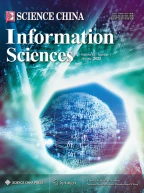Abstract
This paper proposes a two-level multiobjective multidebris active removal mission planning scheme for a multi-nanosatellite active debris removal platform. This scheme consists of a high-level thorough multiobjective transfer planning model to quickly explore a solution space and a low-level trajectory planning scheme to achieve precise rendezvous. A special point orbital maneuver strategy is proposed to coordinate with the impulsive drift-orbit transfer strategy, which resolves the corresponding rendezvous solutions after obtaining multiobjective nondominated transfer solutions. Experiments were conducted to evaluate the architecture of the novel mission planning scheme. The results demonstrate that the multiobjective transfer planning can produce a comprehensive Pareto front for all viable transfer solutions, and the converted corresponding maneuvers can achieve precise rendezvous, which effectively accomplish the goal of multidebris active removal mission planning.
Similar content being viewed by others
References
Liou J C. Engineering and technology challenges for active debris removal. Progress Propul Phys, 2013, 4: 735–748
Braun V, Lüpken A, Flegel S, et al. Active debris removal of multiple priority targets. Adv Space Res, 2013, 51: 1638–1648
Liu Y, Yang J N, Wang Y Z, et al. Multi-objective optimal preliminary planning of multi-debris active removal mission in LEO. Sci China Inf Sci, 2017, 60: 072202
Barbee B W, Alfano S, Pinon E, et al. Design of spacecraft missions to remove multiple orbital debris objects. In: Proceedings of IEEE Aerospace Conference, 2011
Cerf M. Multiple space debris collecting mission: optimal mission planning. J Optim Theory Appl, 2015, 167: 195–218
Shen H X, Zhang T J, Casalino L, et al. Optimization of active debris removal missions with multiple targets. J Spacecraft Rockets, 2018, 55: 181–189
Zuiani F, Vasile M. Preliminary design of debris removal missions by means of simplified models for low-thrust, many-revolution transfers. Int J Aerospace Eng, 2012, 2012: 1–22
Madakat D, Morio J, Vanderpooten D. Biobjective planning of an active debris removal mission. Acta Astronaut, 2013, 84: 182–188
Bérend N, Olive X. Bi-objective optimization of a multiple-target active debris removal mission. Acta Astronaut, 2016, 122: 324–335
Mikkel J, Inna S. Planning and optimization for a multiple space debris removal mission. In: Proceedings of IEEE Aerospace Conference, 2018
Olympio J T, Frouvelle N. Space debris selection and optimal guidance for removal in the SSO with low-thrust propulsion. Acta Astronaut, 2014, 99: 263–275
Di Carlo M, Martin J M R, Vasile M. Automatic trajectory planning for low-thrust active removal mission in low-earth orbit. Adv Space Res, 2017, 59: 1234–1258
Izzo D, Getzner I, Hennes D, et al. Evolving solutions to TSP variants for active space debris removal. In: Proceedings of Annual Conference on Genetic and Evolutionary Computation, 2015. 1207–1214
Yang J, Hu Y H, Liu Y, et al. A maximal-reward preliminary planning for multi-debris active removal mission in LEO with a greedy heuristic method. Acta Astronaut, 2018, 149: 123–142
Stuart J, Howell K, Wilson R. Application of multi-agent coordination methods to the design of space debris mitigation tours. Adv Space Res, 2016, 57: 1680–1697
Nations U. Technical Report on Space Debris. 1999. https://orbitaldebris.jsc.nasa.gov/library/un_report_on_space_debris99.pdf
Lidtke A A, Lewis H G, Armellin R, et al. Considering the collision probability of active debris removal missions. Acta Astronaut, 2017, 131: 10–17
Lidtke A A, Lewis H G, Armellin R. Impact of high-risk conjunctions on active debris removal target selection. Adv Space Res, 2015, 56: 1752–1764
Anselmo L, Pardini C. Ranking upper stages in low Earth orbit for active removal. Acta Astronaut, 2016, 122: 19–27
Anselmo L, Pardini C. Compliance of the Italian satellites in low Earth orbit with the end-of-life disposal guidelines for space debris mitigation and ranking of their long-term criticality for the environment. Acta Astronaut, 2015, 114: 93–100
Pardini C, Anselmo L. Characterization of abandoned rocket body families for active removal. Acta Astronaut, 2016, 126: 243–257
Tadini P, Tancredi U, Grassi M, et al. Active debris multi-removal mission concept based on hybrid propulsion. Acta Astronaut, 2014, 103: 26–35
Utzmann J, Oswald M, Stabroth S, et al. Ranking and characterization of heavy debris for active removal. In: Proceedings of the 63rd International Astronautical Congress, 2012
Andrenucci M, Pergola P, Ruggiero A. Active Removal of Space Debris — Expanding Foam Application for Active Debris Removal. European Space Agency, Advanced Concepts Team, Ariadna Final Report 10-4611, 2011
Lewis H G, George S, Schwarz B S, et al. Space debris environment impact rating system. In: Proceedings of the 6th European Conference on Space Debris, 2013
Cerf M. Space Debris Cleaning Missions. Latvia: Éditions Universitaires Européennes, 2017
Liu Y, Yang J N. A multi-objective planning method for multi-debris active removal mission in LEO. In: Proceedings of AIAA Guidance, Navigation, and Control Conference, 2017
Yan L, Qu B Y, Zhu Y S, et al. Dynamic economic emission dispatch based on multi-objective pigeon-inspired optimization with double disturbance. Sci China Inf Sci, 2019, 62: 070210
Qiu H X, Duan H B. Multi-objective pigeon-inspired optimization for brushless direct current motor parameter design. Sci China Tech Sci, 2015, 58: 1915–1923
Wang H D, Zhang Q F, Jiao L C, et al. Regularity model for noisy multiobjective optimization. IEEE Trans Cybern, 2016, 46: 1997–2009
Abdoun O, Abouchabaka J. A comparative study of adaptive crossover operators for genetic algorithms to resolve the traveling salesman problem. 2012. ArXiv:12033097
Hintz G R. Orbital Mechanics and Astrodynamics. Berlin: Springer, 2015
Liou J C. An active debris removal parametric study for LEO environment remediation. Adv Space Res, 2011, 47: 1865–1876
Peng W, Zhang Q F, Li H. Comparison between MOEA/D and NSGA-II on the multi-objective travelling salesman problem. In: Multi-Objective Memetic Algorithms. Berlin: Springer, 2009. 309–324
Acknowledgements
This work was supported by National Natural Science Foundation of China (Grant Nos. 61703343, 61790552), Natural Science Foundation of Shaanxi Province (Grant No. 2018JQ6070), and Fundamental Research Funds for the Central Universities (Grant No. 3102018JCC003).
Author information
Authors and Affiliations
Corresponding author
Rights and permissions
About this article
Cite this article
Yang, J., Hou, X., Liu, Y. et al. A two-level scheme for multiobjective multidebris active removal mission planning in low Earth orbits. Sci. China Inf. Sci. 65, 152201 (2022). https://doi.org/10.1007/s11432-020-3049-5
Received:
Revised:
Accepted:
Published:
DOI: https://doi.org/10.1007/s11432-020-3049-5

